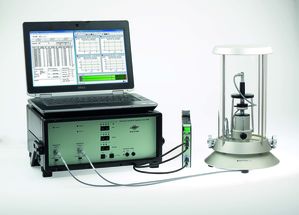Committee Draft 61094-2
Research projects focussed on metrology might well be expected to include aspects relating to primary measurement standards, and this is certainly the case with Infra-AUV the case with Infra-AUV. For sound-in-air, reciprocity calibration of measurement microphones has provided the foundation for these primary measurement standard, and therefore airborne sound measurements in general, for many decades. There have even been efforts recently to extend the method into the infrasound region. The Infra-AUV project therefore has a good starting point for further development.
These recent efforts have highlighted discrepancies in the methods in widespread use and embodied in International Standard IEC 61094-2, which originate in the models used to account for deviations from adiabatic behaviour. This model becomes increasingly important as the frequency reduces and is therefore critical in extending the reciprocity calibration method to frequencies lower that around 4 Hz. A new model was published by members of this project team (from CEA and LNE) in 2019 and has just been adopted into a new draft amendment of IEC 61094-2. This Committee Draft (CD) has recently been circulated to National Committees for review, representing the first step is resolving the discrepancies and enabling reciprocity calibration to be extended to yet lower frequency.

